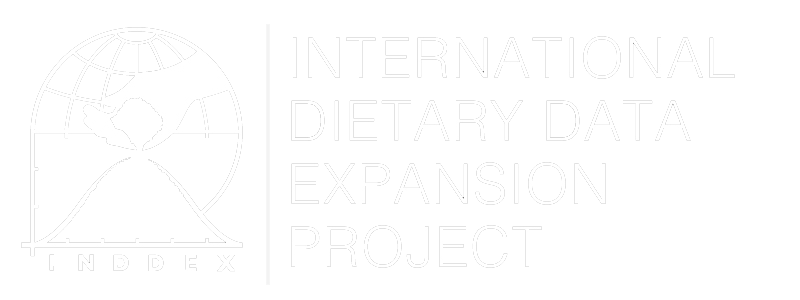Diet Quality Index - International (DQI-I)
Overview
The Diet Quality Index - International (DQI-I) is illustrative of a class of healthy diets metrics, which includes other metrics, such as the Healthy Eating Index (HEI). The DQI-I is highlighted here because it is one of the few indicators that has been validated across a range of cultural contexts with different dietary patterns.
The DQI-I is a composite, individual-level diet quality indicator. Created in 2003, it was the first indicator of healthy diets designed to enable cross-cultural diet quality comparisons (Kim et al., 2003). The DQI-I is built off existing indicators, such as the HEI and the Diet Quality Index (DQI), but was formulated to incorporate the many aspects of a diet which contribute to quality, including diversity, adequacy, moderation, and balance.
Method of Construction
The DQI-I was formulated to capture many aspects of diet quality, namely: variety, adequacy, moderation, and balance. The table below summarizes basic information on how the components are defined and scored.
|
Diet quality component |
Grouping of diet quality component |
Scoring criteria |
Score |
|
Variety - food groups |
5 food groups: meat/poultry/fish/egg, dairy/beans, grains, fruits, and vegetables |
Each food group awarded 0 or 3 pts. 3 points awarded if at least 1 item from that group was consumed |
0-15 |
|
Variety - protein sources |
6 sources: meat, poultry, fish, dairy, beans, eggs |
3 or more sources consumed: 5 pts 2 sources consumed: 3 pts 1 source consumed: 1 pts 0 sources consumed: 0 pts |
0-5 |
|
Adequacy |
8 groups: vegetables, fruit, grain, fiber, protein, iron, calcium, vitamin C |
Between 0 and 5 points awarded for each of the 8 adequacy groups, depending on percentage of or Recommended Daily Allowances (RDA) met |
0-40 |
|
Moderation |
6 groups: total fat, saturated fat, cholesterol, sodium, empty calorie foods |
Between 0 and 6 points awarded for each of the 5 moderation groups, depending on percentage of RDA met |
0-30 |
|
Balance |
2 groups: macronutrient ratio, fatty acid ratio |
Between 0 and 6 points awarded, depending on ratio of macronutrients and between 0 and 4 points awarded depending on ratio of fatty acids |
0-10 |
The DQI-I is calculated by summing each of the five sub-scores together, producing a number between 0 and 100. For more details about scoring, please refer to the "Construction of the DQI-I" section of Kim et al., 2003.
Uses
The DQI-I is used to assess the diet quality of individuals, and can be used in a variety of cross- cultural settings, making it useful in comparing diets across regions (Kim et al., 2003). Additionally, this indicator accounts for specific nutrients associated with chronic, diet-related illnesses and includes particular food groupings, such as empty calorie foods, that make it a particularly useful tool for assessing changing diet quality associated with the nutrition transition (Kim et al., 2003). As an individual-level indicator, it can be linked to individual health outcomes or demographic information (Yun et al., 2009).
Strengths and Weaknesses
The main strength of the DQI-I is that it offers greater richness in its definition and evaluation of diet quality than many other composite diet quality indices. For example, the Healthy Eating Index is based solely on food group consumption (USDA, 2006), and the DQI, the indicator on which the DQI-I is based, touches upon the same four diet quality components, but employs fewer measures and quantifies fewer micronutrients (Newby et al., 2003).
The DQI-I's weaknesses include the large amount of information required to calculate this indicator; it is necessary to have multiple days of quantitative diet recall information from each respondent, which is not always feasible given resource constraints. The DQI-I uses weights to proportionally score food based on its assumed nutritional importance and researchers have found that standardized weights may not be applicable in all scenarios (Tur et al., 2005).
Data Source
The DQI-I must be calculated from quantitative individual-level dietary data. Such data can be obtained from semi-quantitative food frequency questionnaires (FFQ), 24-hour dietary recalls, or weighed food records. Appropriate food composition tables for the context should be used to calculate the nutrient content of foods consumed [see the International Network of Food Data Systems (INFOODS) through the UN Food and Agriculture Organization (FAO) and the World Nutrient Databases for Dietary Studies (WNDDS) from the Agriculture and Food Systems Initiative.
Finally, to calculate the adequacy, moderation, and balance scores, Recommended Dietary Allowance (RDAs) or Reference Nutrient Intake (RNIs) can be obtained from the Institute of Medicine for the United States (IOM, 2006), British Nutrition Foundation for the United Kingdom (British Nutrition Foundation, 2016), and the European Food Safety Authority of the European Union (EFSA, 2017), among others.
Links to Guidelines
Links to Validation Studies
- Kim et al., (2003). The Diet Quality Index-International (DQI-I) provides an effective tool for cross-national comparison of diet quality as illustrated by China and the United States. The Journal of Nutrition.
- Tur et al., (2005). The Diet Quality Index – International: Is it a useful tool to evaluate the quality of the Mediterranean diet?. British Journal of Nutrition.
- Shin et al., (2015). Dietary patterns and their associations with the Diet Quality Index- International (DQI-I) in Korean women with gestational diabetes mellitus. Clinical Nutrition Research.
Links to Illustrative Analyses
- Setayeshgar et al., (2017). "Diet quality as measured by the Diet Quality Index–International is associated with prospective changes in body fat among Canadian children."
- Mariscal-Arcas et al., (2007). "Diet quality of young people in southern Spain evaluated by a Mediterranean adaptation of the Dietary Quality Index-International (DQI-I)."
